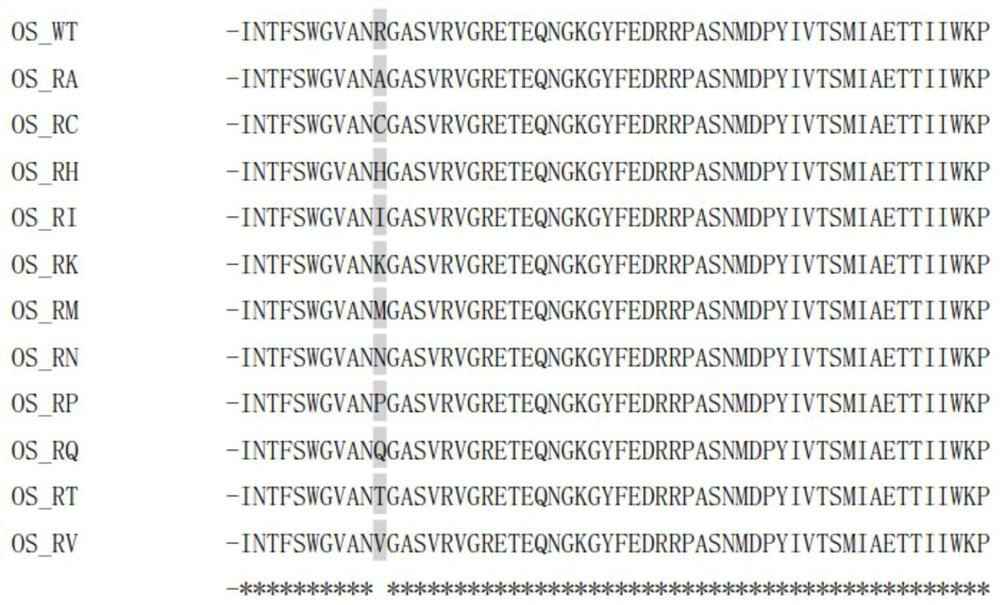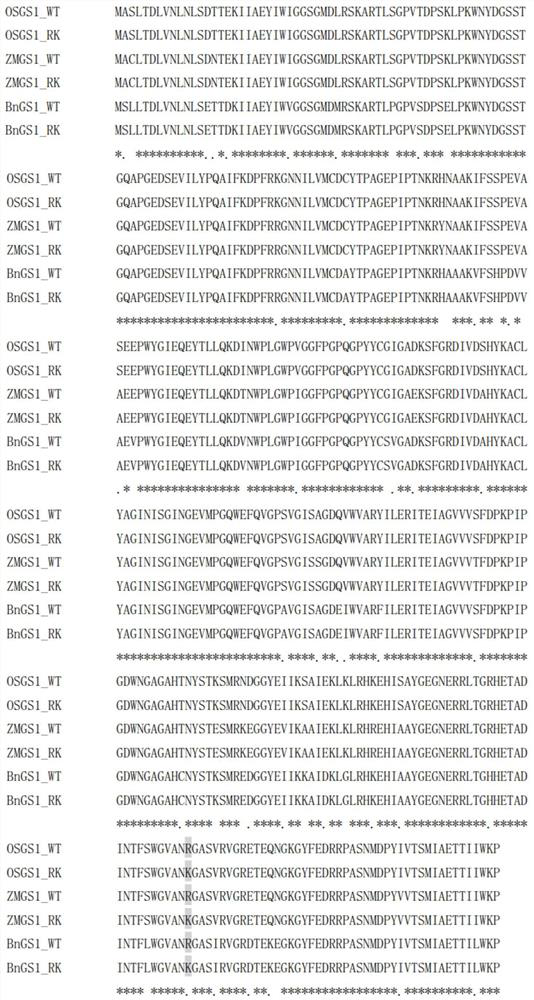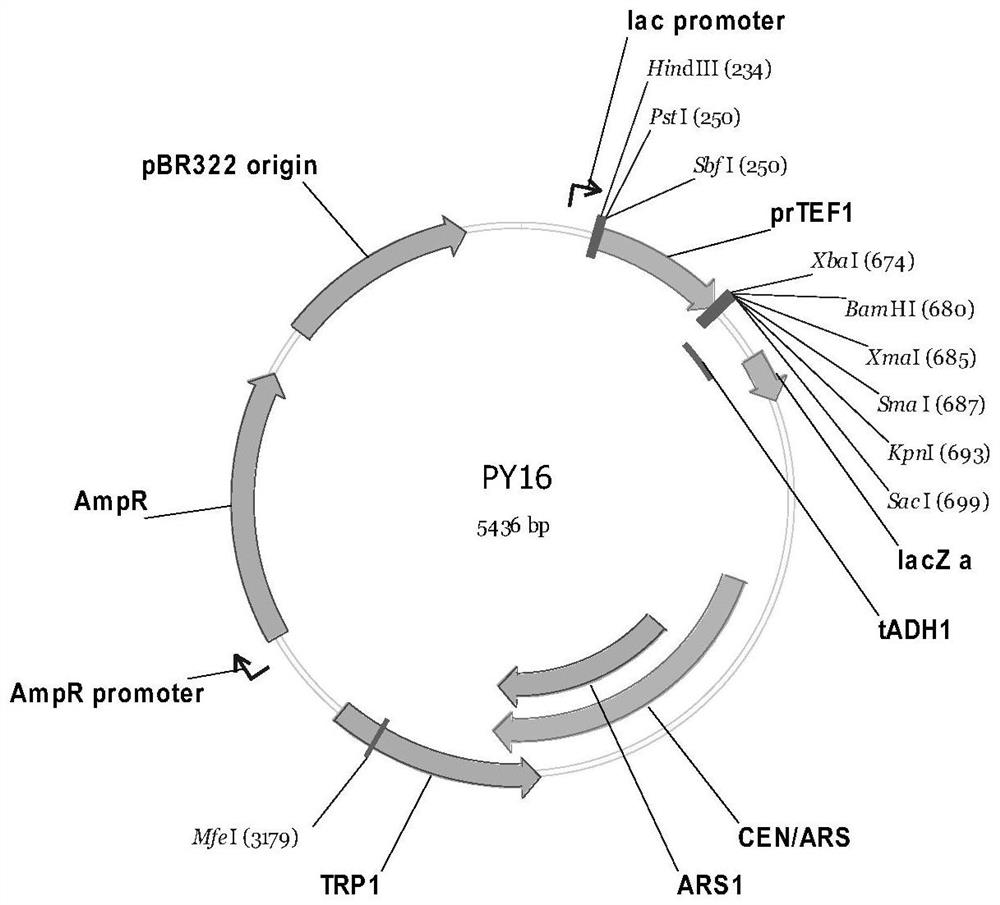Glutamine synthetase mutant with glufosinate-ammonium resistance, recombinant gene, recombinant vector and application thereof
A glutamine and recombinant gene technology, applied in the field of bioengineering, can solve the problems of non-inhibition, achieve the effect of improving resistance and broad application prospects
- Summary
- Abstract
- Description
- Claims
- Application Information
AI Technical Summary
Problems solved by technology
Method used
Image
Examples
Embodiment 1
[0033] This embodiment provides multiple glutamine synthetase (glutaminesynthetase, GS) mutants derived from rice (Oryza sativa), these GS mutants are named: OS_WT, OS_RA, OS_RC, OS_RH, OS_RI, OS_RK, OS_RM, OS_RN , OS_RP, OS_RQ, OS_RT, OS_RV; these GS mutants are compared with the rice wild-type GS amino acid sequence (SEQID NO.1), corresponding to the 311th amino acid sequence (OS_WT) of the rice wild-type GS mutation, specifically mutation type see figure 1 , the gray shading is position 311, the length of these GS mutants and the amino acid residue types of the remaining positions are the same as those of rice wild-type GS.
Embodiment 2
[0035] This example provides the corn glutamine synthetase mutant ZmGS1_RK, compared with the rice wild-type GS amino acid sequence (SEQ ID NO.1), such as figure 2 Alignment of the amino acid sequences of the wild-type GS of rice, corn and rapeseed shown with the amino acid sequences of the corresponding mutants. The 311th position corresponding to the amino acid sequence of rice wild-type GS is mutated, the specific mutation R311K; the length of ZmGS1_RK and the amino acid residue types of other positions are the same as those of maize wild-type GS (SEQ ID NO.2).
Embodiment 3
[0037]This example provides rapeseed glutamine synthetase mutant BnGS1_RK, compared with rice wild-type GS (SEQ ID NO.1), corresponding to the 311th position of the rice wild-type GS amino acid sequence mutation, the specific mutation R311K; BnRK The length and the amino acid residue types of the remaining positions are the same as those of the rapeseed wild-type GS amino acid sequence (SEQ ID NO.3).
PUM
 Login to View More
Login to View More Abstract
Description
Claims
Application Information
 Login to View More
Login to View More - R&D
- Intellectual Property
- Life Sciences
- Materials
- Tech Scout
- Unparalleled Data Quality
- Higher Quality Content
- 60% Fewer Hallucinations
Browse by: Latest US Patents, China's latest patents, Technical Efficacy Thesaurus, Application Domain, Technology Topic, Popular Technical Reports.
© 2025 PatSnap. All rights reserved.Legal|Privacy policy|Modern Slavery Act Transparency Statement|Sitemap|About US| Contact US: help@patsnap.com



